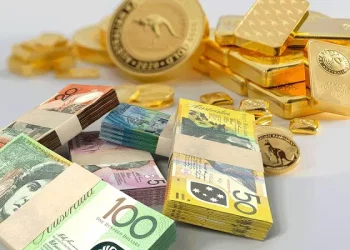?
It refers to the foreign currency that can be used or the means of payment expressed in foreign currency.
Article 3 of the “promulgated in 1996” stipulates the specific contents of foreign exchange, foreign exchange refers to: ¢Ù foreign currency.
Including paper money and coins.
¢Ú Foreign currency payment certificate.
Including bills, bank payment vouchers, postal savings vouchers and so on.
¢Û Foreign currency securities.
Including government bonds, corporate bonds, stocks and so on.
¢Ü, European units.
¢Ý Other assets and Pricing Methods Denominated in foreign currency Exchange rate, also known as exchange rate, is the price of one currency expressed in another currency, or the price ratio between two currencies.
Above, the exchange rate is shown in five digits, such as 0.9705.
The smallest unit of change in the exchange rate is a single point, i.e. a change in the last digit, such as 0.0001 euro.
According to international practice, the name of a currency is usually represented by three English letters.
There are two main pricing methods of exchange rate: indirect pricing method and direct pricing method (1), which calculates the number of units of local currency payable according to a certain unit of foreign currency (1, 100, 1000, 10000).
It is equivalent to calculating the amount payable in local currency for the purchase of a unit of foreign currency, so it is called the price payable method.
At present, most countries in the world, including China, adopt the direct pricing method.
Above the market, Canadian dollars, etc., are directly priced.
For example, the Japanese yen is 119.05, that is, one is 119.05 yen. Under the direct pricing method, if the amount of a unit into local currency exceeds the previous period, it indicates that the value of foreign currency increases or the value of local currency decreases, which is the so-called exchange rate rise.
On the contrary, if you want to use less local currency, you can exchange the same amount of foreign currency, which indicates that the value of the foreign currency has fallen or the value of the local currency has risen. This is called a decline, that is, the value of the foreign currency is proportional to the rise and fall of the exchange rate (2), also known as the receivable mark method.
Calculate multiple units of foreign currency receivable based on the local currency of one unit (e.g., one unit).
On the international foreign exchange market, the euro, and are directly priced.
If the euro is 0.9705, that is, one euro is US $0.9705 in the direct pricing method, then the local currency amount remains unchanged and the foreign currency amount varies with the comparison of the local currency value.
If it is more difficult for a certain amount of domestic currency to be converted into foreign currency than in the previous period, it indicates that the value of foreign currency has risen and the value of domestic currency has fallen, that is, the exchange rate of foreign exchange has fallen.
On the contrary, if a certain amount of local currency convertible more foreign currency than the previous period, suggests that the fall in the value of the foreign currency and local currency rise in value, namely, foreign currency exchange rates to rise, namely, the rise and fall of the value of foreign currency and exchange rate is inversely proportional to the foreign exchange market price is usually two-way quotation, namely the bidder should identify yourself at the same time, the client shall decide buy and sell.
The wider the gap between and, the greater the cost to investors.
The price quoted for interbank transactions is usually 2-3 points, and the difference in the price points offered by the bank (or dealer) to the customer is small.
At present, the quotation points for overseas margin trading are basically 3 to 5, 6 to 8 in Hong Kong, and 10 to 40 for domestic banks.




























